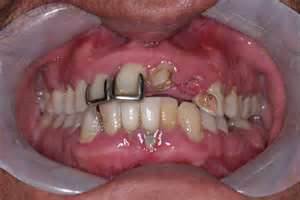A dental bridge as the term suggests entails bridging the gap left by a missing tooth, or even teeth, by permanently joining the two adjacent teeth across the gap.
This delicate process relies heavily on the fabricated material that a dentist will use to bridge the gap as well as how the bridge will anchor the two adjacent teeth. The common materials used to fabricate dental bridges include gold, porcelain or a fusion of porcelain and metal. Bridges made of gold and those made of porcelain fused to metal are normally the strongest.
The widespread use of dental bridges stems from the fact that close to 70% of adults in America aged between 35 and 45 have at one point lost at least a tooth due to various factors including accidents, failed root canals, gum disease and tooth decay, according to the American Association of Oral and Maxillofacial surgeons.
In most situations, filling up gaps in teeth normally requires either dental bridges or tooth implants. Dental bridges hold the advantage over tooth implants in the sense that they are cheaper in cases where more than one tooth is missing, require fewer trips to a dentist and often do not require bone grafting like in the case of implants.
However, bridges may compromise the abutment teeth since reducing them for alignment with the bridge may cause them more pressure than would normally be the case. Were this happen, the abutment teeth may decay in the future. Many dentists do not consider dental bridges as a permanent solution since they normally require replacement every ten to fifteen years particularly whenever the gum line recedes.
For most people, replacing a missing tooth or teeth may appear to be a cosmetic issue but the truth is that in most cases, failure to replace fill the gap may have an impact on their dental well being. The main reason for this is that teeth normally need each other to maintain their proper position. Therefore, whenever a gap is formed by the loss of one or more teeth, the adjacent teeth will possibly shift its position potentially leading to conditions like TMJ (temporomandibular joint), misaligned bites and a higher risk of gum disease and tooth decay.
Dental bridges typically come in three types. The first type is the fixed bridge, which is the most durable and can be placed anywhere in the mouth. The second type is the resin-bonded bridge that is often preferred at the front where stress is minimal. The third type is the cantilever bridge that normally anchors to only one abutment tooth, for example, at the back of the mouth.
